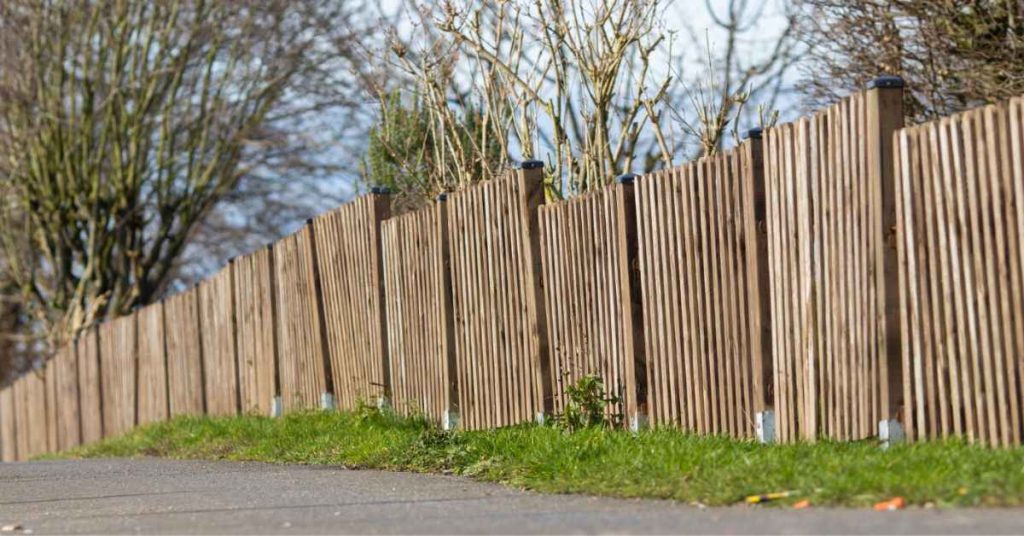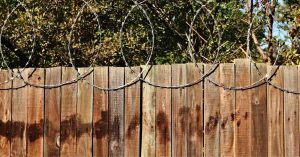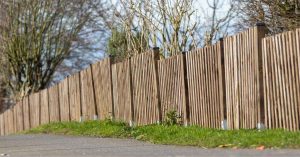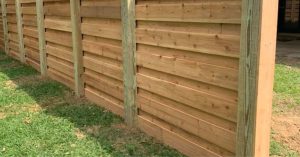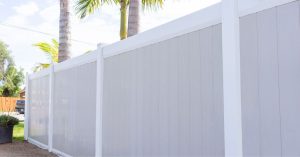Choosing the right wood for your fence is important. Pine and cedar are popular choices, but they have different characteristics that affect their longevity.
At State Fencing, we aim to provide high-quality fencing solutions that suit your needs. This guide will help you understand the differences between pine and cedar, focusing on their durability, maintenance, cost, and more.
Basic Characteristics
Pine
Pine is light-colored and has a smooth grain. It’s affordable and easy to work with, making it a common choice for construction and DIY projects. Pine is also known for its wide availability, making it a go-to material for many woodworkers. There are several types of pine, including white pine and yellow pine, each with slightly different properties.
Cedar
Cedar is known for its rich color and aromatic properties. It naturally resists decay and insects, making it ideal for outdoor projects like wood fences and decks. Cedar’s pleasant scent comes from its natural oils, which also contribute to its resistance to pests and rot. There are different types of cedar, such as Western Red Cedar and Eastern White Cedar, each offering unique benefits. If you aim to protect wood fences from weathering and rot, cedar is an excellent option due to its inherent properties.
Longevity and Durability
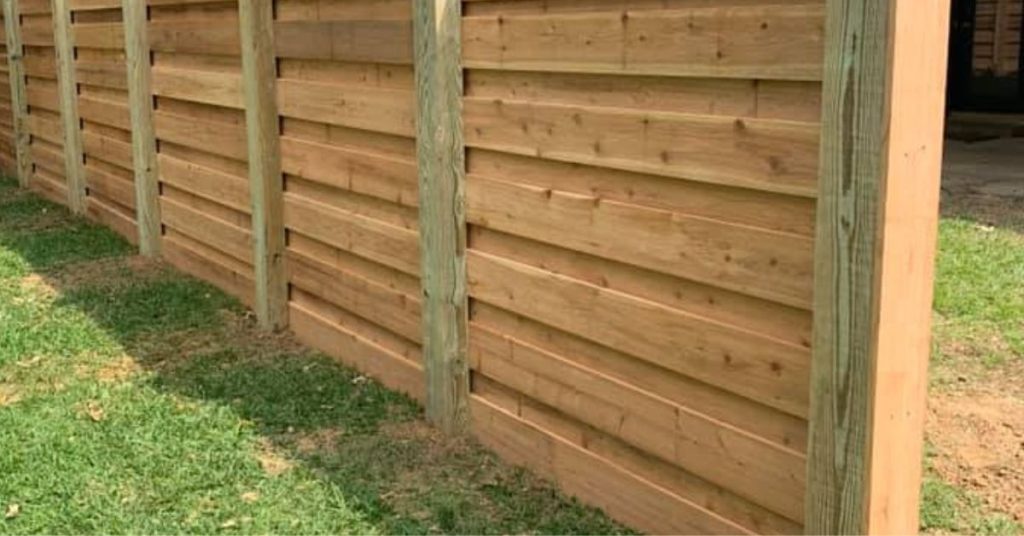
Natural Durability
- Pine: Pine is more susceptible to decay and insect damage if untreated. Pressure treatment can extend its lifespan significantly. Treated pine can last for 15-20 years, depending on the level of exposure to the elements and proper maintenance.
- Cedar: Cedar is naturally resistant to decay, moisture, and insects because of its oils, giving it a longer lifespan even without treatments. Untreated cedar can last 20-30 years, and with proper maintenance, it can last even longer.
Treatment and Preservation
- Pine: Pressure-treated pine is more durable for outdoor use, but regular treatments are necessary to maintain its protective qualities. Treatments involve infusing the wood with chemicals that protect against rot and insects.
Maintenance includes reapplying sealants or stains every few years to keep the wood in good condition. For those considering driveway gates, treated pine can provide a cost-effective yet durable solution. - Cedar: Cedar’s natural oils provide long-lasting protection, reducing the need for additional treatments, though occasional sealing can enhance its lifespan. Cedar does not require chemical treatments, which makes it a more environmentally friendly option.
Environmental Factors
Climate Impact
- Pine: Pine can warp or split in extreme weather if not properly maintained. Regular sealing and staining help mitigate these effects. Pine’s performance in different climates can vary, with high humidity and extreme temperature changes posing challenges.
- Cedar: Cedar is more stable in various climates due to its natural resilience and is less likely to warp or crack. Cedar can handle moisture well, making it suitable for damp climates.
Maintenance Needs
- Pine: Requires regular fence maintenance, including sealing, staining, or painting to protect against moisture and pests, which affects its longevity. Neglecting maintenance can lead to quicker degradation and a shorter lifespan.
- Cedar: Requires less maintenance than pine. Occasional sealing helps maintain its natural resistance and appearance. Cedar’s low-maintenance nature makes it a popular choice for homeowners looking for a durable yet easy-to-care-for option.
Cost Analysis
Initial Costs
- Pine: Generally cheaper initially, making it cost-effective for large projects. The lower cost can be appealing for budget-conscious projects, but it’s important to consider long-term expenses.
- Cedar: Higher initial cost due to its superior durability and aesthetic appeal. The investment in cedar can pay off over time with its longer lifespan and reduced maintenance needs.
Long-term Costs
- Pine: Maintenance and treatment costs can add up over time, impacting the overall cost of ownership. Frequent sealing, staining, and potential fence repairs can make pine more expensive in the long run. For those looking to preserve your fence over the years, cedar may be a more cost-effective choice despite its higher initial cost.
- Cedar: Lower long-term maintenance costs due to its natural durability, making it more economical in the long run. Cedar’s resistance to rot and insects reduces the need for frequent treatments and repairs.
Environmental and Sustainability Considerations
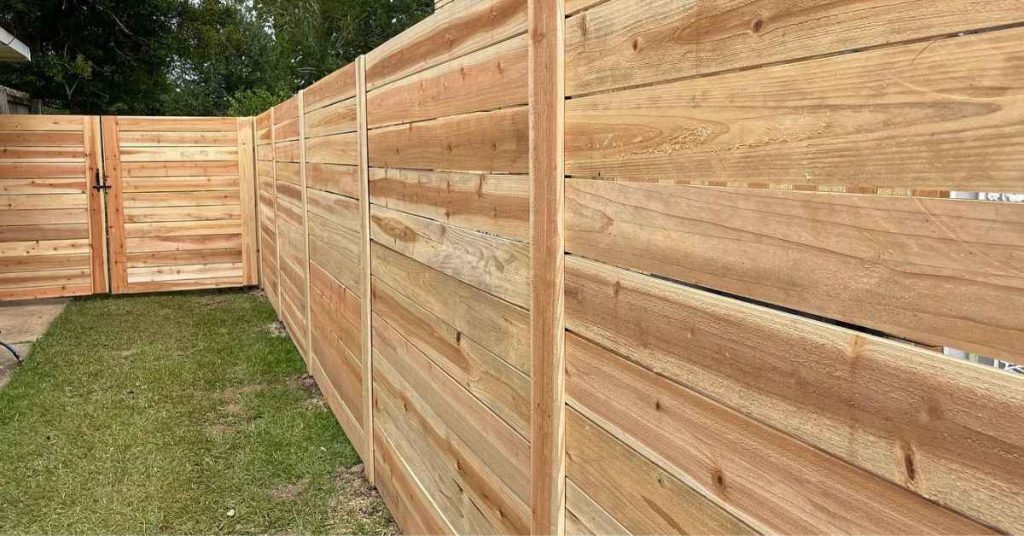
Sustainability
- Pine: Sustainable if sourced from responsibly managed forests, but chemical treatments can have environmental impacts. Look for FSC-certified pine to ensure responsible sourcing.
- Cedar: A sustainable choice, especially when sourced from certified forests, with less need for chemical treatments. Cedar’s natural durability reduces the environmental footprint associated with maintenance.
Sourcing and Eco-friendliness
- Pine: Ensure it’s sourced from sustainable forestry practices to minimize environmental impact. The environmental impact of pressure treatments should also be considered.
- Cedar: Look for environmentally certified cedar products to ensure eco-friendly sourcing. Cedar’s natural properties make it a greener choice for those concerned with sustainability.
Aesthetic and Design Flexibility
Visual Appeal
- Pine: Can be stained or painted to achieve various looks, offering versatility in design. Pine’s adaptability makes it a good choice for custom fence projects requiring a specific color or finish.
Pine: Can be stained or painted to achieve various looks, offering versatility in design. Pine’s adaptability makes it a good choice for custom fence projects requiring a specific color or finish. Pine is often used in combination with metal fences to create a unique and aesthetically pleasing design.
- Cedar: Naturally beautiful and develops a desirable patina over time. It can also be stained to maintain its rich color. Cedar’s aesthetic appeal lies in its natural grain and warm tones.
Design Applications
- Pine: Suitable for a wide range of designs and commonly used in fencing, decking, and other outdoor structures. Pine’s flexibility in design makes it a versatile option for various projects.
- Cedar: Preferred for projects where natural beauty and longevity are priorities, like premium fences and decorative elements. Cedar is often chosen for its superior appearance and long-lasting qualities. Additionally, cedar is a top recommendation by many fence installation services for its all-around benefits.
Conclusion
Choosing between pine and cedar depends on your priorities, whether it’s initial cost, maintenance, or long-term durability. At State Fencing of Baton Rouge, we provide expert advice regarding planning your fence and choosing high-quality materials to help you make the best choice for your fence project.
Contact State Fencing of Baton Rouge or call us at (225) 334-8840 today to discuss your fencing options and get a quote for your next fence project.

